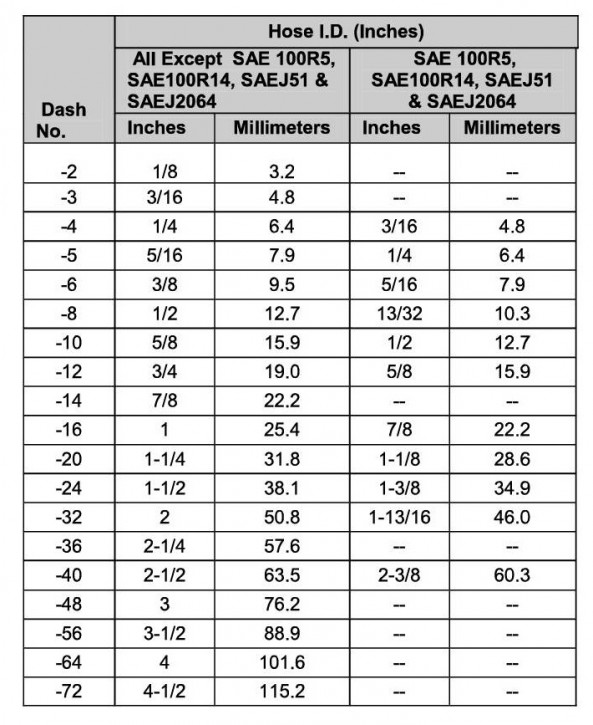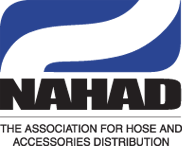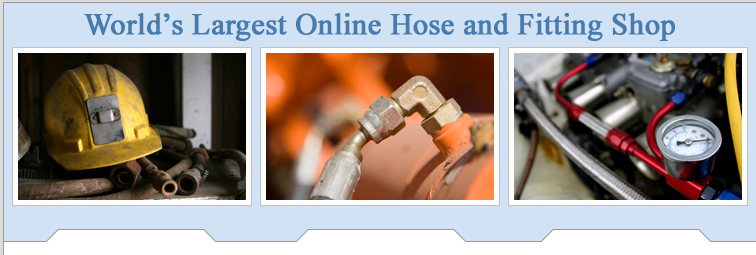
Size: ID (Inside Diameter)
The hydraulics industry has adopted a measuring system called Dash Numbers to indicate hose and coupling size. The number which precedes the hose or coupling description is the dash size (table below). The industry standard number denotes hose ID in sixteenths of an inch. The exception to this is the SAE 10R5, SAE 100R14 hoses as well as SAEJ51 and SAE J2064 refrigerant hoses, where dash sizes denote hose ID equal to equivalent OD (Outside Diameter).
Hose OD can be a critical factor when house routing clamps are used or hoses are routed through bulkheads. Hose ODs will vary. Check our hydraulic fittings size chart for the different ODs.

The inside diameter of the hose must be adequate to keep pressure loss to a minimum and avoid damage to the hose due to heat generation or excessive turbulence. Note: for existing assemblies, to determine the replacement hose ID, read the lay line printing on the side of the orginal hose. If the original hose lay line is painted over or worn off, the original hose must be cut and the inside diameter measured for size.
Flow Rate / Fluid Velocity
The flow rate of the system in conjunction with the inside diameter of the hose will dictate the fluid velocity through the hose. Consult hoseandfittings.com for specific recommended velocity ranges. Please note that suction line recommendations are different than pressure lines.
Inside Diameter
The correct inside diameter should be determined for the hose required for the application. If the flow rate of the system allows two options for a suitable ID, it is recommended that the larger be selected if pressure allows. High velocities can contribute excessive noise and heat to the hydraulic systems and can reduce efficiency.
© Copyright 2012 by the Association for Hose & Accessories Distribution, Inc. 


